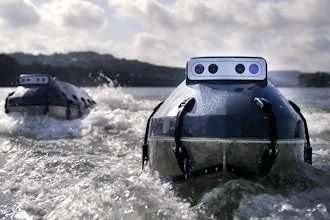
Chemometrics, the application of statistics to the field of chemical analysis, is often used in the oil and gas industry to make product quality predictions. The data – which is typically derived from process analytical tools such as Raman, near infrared (NIR), gas chromatography (GC), High Performance Liquid Chromatography (HPLC) and others – is critical for oil and gas companies to unlock valuable information about chemical composition, physical properties and other parameters of oil, gas and blended fuels.
“Chemometrics is a way oil and gas companies can turn data into dollars and it is becoming the de facto method for processing analyzer instrument output. The information can then be used to fast track the delivery of products to the market, reduce processing costs and maximize value,” said Tom Dearing, Director of Chemometrics at Seattle-based MarqMetrix, a company that specializes in compositional analysis using Raman spectroscopy.
 The information gathered can be used to fast track the delivery of products to the market, reduce processing costs and maximize value.MarqMetrix
The information gathered can be used to fast track the delivery of products to the market, reduce processing costs and maximize value.MarqMetrix
Chemometrics is particularly useful when deployed in conjunction with Raman spectroscopy as it translates the information rich spectra to accurately measure the composition of refined fuel properties of gasoline, jet and diesel fuels.
“Raman spectroscopy can be used to predict the different chemical compounds that make up the sample. It can be used to analyze the API number, Research Octane Number (RON) or Motor Octane Numbers (MON), Reid vapor pressure (RVP) or to predict the concentrations of hydrocarbons (C1 to C6+), CO2 and N2” said Dearing.
The challenge is that companies have typically created predictive models using other types of instrumentation, which are validated and approved by their performance committees and that satisfy ASTM standards. As a result, many labs may be reluctant to adopt new instruments due to the prospect of having to rebuild and revalidate their models from scratch.
Fortunately, experienced Raman spectroscopy providers are simplifying the process by offering premade starter models that can be readily used for most common measurements in oil and gas. The models can then be modified and expanded, as needed. This largely eliminates the time and cost required to conduct 30 to 50 reference analysis tests during the development of new models.
According to Dearing, MarqMetrix has midstream as well as downstream refinery and third-party testing labs already using these core calibration models including U.S. Oil and Refining Co. (U.S. Oil).
“By using a model, oil and gas companies can substantially lower their cost by moving straight to the model maintenance phase where they collect just one or two samples to verify and update the model,” added Dearing. “Once a model is further developed, it can then be shared and deployed to additional analyzers.”
MarqMetrix’s chemometrics experts also assist in converting existing predictive models used on traditional analytical instruments to simplify an equipment upgrade.
“A mathematical transformation allows the customer to continue using their validated models. MarqMetrix essentially collects data on the two separate instruments [the old and the new] and then maps the differences between them to enable the conversion,” said Dearing.
 Chemometrics is a way oil and gas companies can turn data into dollars and it is becoming the de facto method for processing analyzer instrument output.MarqMetrix
Chemometrics is a way oil and gas companies can turn data into dollars and it is becoming the de facto method for processing analyzer instrument output.MarqMetrix
Streamlining Testing
Pre-developed models and a simplified conversion process facilitate the widespread use of Raman as a supplement to more expensive, time-consuming tests.
In one promising area of utilization, lab personnel have used Raman spectroscopy to supplement the analysis of octane number when testing gasoline blends. Instead of using the knock-engine to test a dozen samples during the blending process, the lab runs the knock-engine on the final sample. When Raman spectroscopy confirms the specified RON or MON target is reached, the lab will then run the knock-engine test on that final sample to validate the blend to ensure it conforms to ASTM standards. This approach significantly improves the throughput and processing speed within the lab and delivers pertinent operational information in seconds.
“What may normally take two or three hours to process in a lab with traditional physical testing can be done in a fraction of the time with Raman spectroscopy and chemometrics,” said Dearing.
“Raman spectroscopy with the addition of validated models allows labs to achieve faster turnaround, higher throughput and near real-time results for processes they need to monitor, quantify or blend,” added Dearing.
There are many benefits to streamlining testing in the lab. Utilizing Raman with validated modeling and chemometrics, for example, can help processors achieve more accurate octane ratings without over blending.
“Right now, [oil and gas companies] have to ‘give away’ some octane to make sure that when the actual samples are taken to the lab and analyzed, they are not below strict specifications. If below the target value, they are required to re-blend to bring the octane up to the spec,” explained Dearing.
“The incremental savings of not having to over-blend by even minor amounts like 0.2 or 0.3 can translate to a significant amount of money long term, not to mention time saved on having to reprocess out of specification fuel,” said Dearing.
Raman Equipment
In the past, Raman instruments were less reliable and required models specifically designed for the analyzer. Now, more stable, solid-state systems allow core models to be applied to achieve reproducible results from unit to unit. For example, in the MarqMetrix All-in-One each device is nearly an exact copy so common mathematical models can be applied across multiple systems to produce consistent results.
The compact All-In-One is designed in a package 80% smaller than previous Raman instruments and has no moving parts. The system works with a wide array of both contact and non-contact probes suitable for oil and gas applications that can be changed in seconds without the need for recalibration.
The instrument can be used on any samples (liquid, solid, gas) that require Raman analysis, providing labs with tremendous flexibility in measurement and capability.
As the oil and gas sector increasingly relies on chemometrics and Raman spectroscopy to expedite quality assurance, processing and distribution and simplified predictive modeling will play an important role. The combination allows labs to achieve faster turnaround, higher throughput and real time results for the processes that they are looking to monitor, quantify or blend.
 The combination of chemometrics and Raman spectroscopy streamlines turnaround, throughput and real time test results in laboratories.MarqMetrix
The combination of chemometrics and Raman spectroscopy streamlines turnaround, throughput and real time test results in laboratories.MarqMetrix























